Honeysuckle or woodbine
Leaves and stem
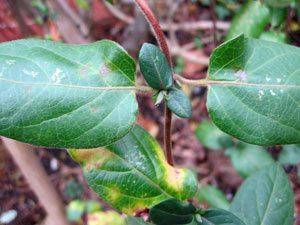
Leaves have an oval shape, they occur in pairs opposite to one another. The leaf margin is entire or 'smooth' (i.e. there are no teeth). The leaves may be connected to the stem by means of leaf stalks or sometimes these may be absent.
The leaves start to appear during the winter months.
Flowers and Fruits
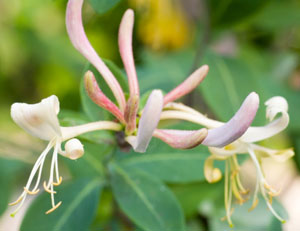
The flowers occur in clusters / heads, and are a yellow / cream colour but when pollinated may develop an orange colouration, with a touch of crimson / red. Each flower has two lips and a long slender tube (with bracts at the base of the tube). The flowers are produced from June through to September. Pollination is by either moths or long tongued bees.
The honeysuckle is particularly noted for its (potent) scent - especially on warm summer evenings.
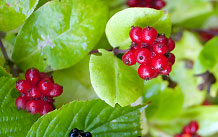
The fruit is a red berry. The berries, like the flowers, are clustered together.
Ecology and other notes
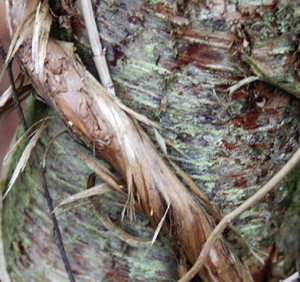
Honeysuckle or woodbine (Lonicera periclymenum) is a deciduous, woody climber. It entwines around other trees and shrubs (in a clockwise manner), it can cause distortions in their growth; and can reach heights of 7 metres (20+ feet) - see adjacent image. It is common in woodlands and hedgerows across the UK.
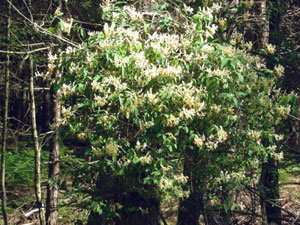
A number of other species of honeysuckle may be found - perhaps originating as garden escapes. They can sometimes be distinuished from the native woodbine by the colour of the berries (black - in the case of the Japanese Honeysuckle, or orange for the Perfoliate Honeysuckle) or the colour of the flowers.